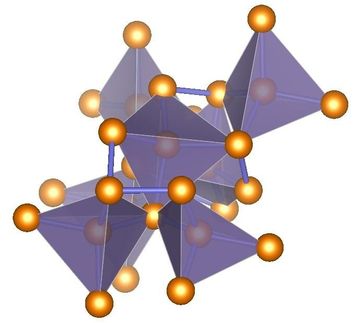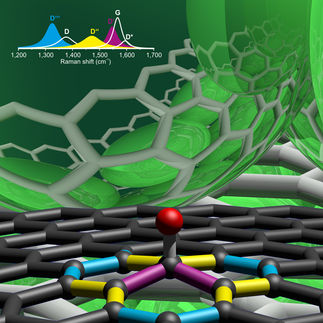Magnets trump metallics
Magnetic fields can block conductivity of carbon nanotubes
Advertisement
Metallic carbon nanotubes show great promise for applications from microelectronics to power lines because of their ballistic transmission of electrons. But who knew magnets could stop those electrons in their tracks?
Rice physicist Junichiro Kono and his team have been studying the Aharonov-Bohm effect -- the interaction between electrically charged particles and magnetic fields -- and how it relates to carbon nanotubes. While doing so, they came to the unexpected conclusion that magnetic fields can turn highly conductive nanotubes into semiconductors. Their findings are published online this month in Physical Review Letters.
"When you apply a magnetic field, a band gap opens up and it becomes an insulator," said Kono, a Rice professor in electrical and computer engineering and in physics and astronomy. "You are changing a conductor into a semiconductor, and you can switch between the two. So this experiment explores both an important aspect of the results of the Aharonov-Bohm effect and the novel magnetic properties of carbon nanotubes."
Kono, graduate student Thomas Searles and their colleagues at the National Institute of Standards and Technology (NIST) and in Japan successfully measured the magnetic susceptibility of a variety of nanotubes for the first time; they confirmed that metallics are far more susceptible to magnetic fields than semiconducting nanotubes, depending upon the orientation and strength of the field.
Single-walled nanotubes (SWNTs) -- rolled-up sheets of graphene -- would all look the same to the naked eye if one could see them. But a closer look reveals nanotubes come in many forms, or chiralities, depending on how they're rolled. Some are semiconducting; some are highly conductive metallics. The gold standard for conductivity is the armchair nanotube, so-called because the open ends form a pattern that looks like armchairs.
Not just any magnet would do for their experiments. Kono and Searles traveled to the Tsukuba Magnet Laboratory at the National Institute for Materials Science (NIMS) in Japan, where the world's second-largest electromagnet was used to tease a refined ensemble of 10 chiralities of SWNTs, some metallic and some semiconducting, into giving up their secrets.
By ramping the big magnet up to 35 tesla, they found that the nanotubes would begin to align themselves in parallel and that the metallics reacted far more strongly than the semiconductors. (For comparison, the average MRI machine for medical imaging has electromagnets rated at 0.5 to 3 tesla.) Spectroscopic analysis confirmed the metallics, particularly armchair nanotubes, were two to four times more susceptible to the magnetic field than semiconductors and that each chirality reacted differently.
The nanotubes were all about 0.7 to 0.8 nanometers (or billionths of a meter) wide and 500 nanometers long, so variations in size were not a factor in results by Searles. He spent a week last fall running experiments at the Tsukuba facility's "hybrid," a large-bore superconducting magnet that contains a water-cooled resistive magnet.
Kono said the work would continue on purified batches of nanotubes produced by ultracentrifugation at Rice. That should yield more specific information about their susceptibility to magnetic fields, though he suspects the effect should be even stronger in longer metallics. "This work clearly shows that metallic tubes and semiconducting tubes are different, but now that we have metallic-enriched samples, we can compare different chiralities within the metallic family," he said.






























































